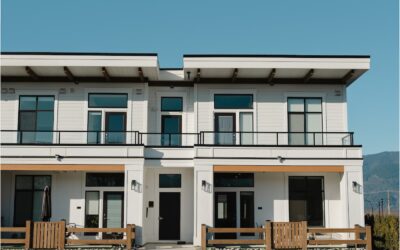May 20, 2021
We recently shared Part 1 to our blog series on the BRRR Real Estate Strategy. In this second and final part we review the additional parts of the strategy including renovating a property, renting out your property, and refinancing.
Renovate the Property
Renovating a rental property can bring in additional rental income and raise the value of the property if it is done correctly.

Start by making a list of renovations that need be done. Hiring contractors ensures the work will be done correctly and up to code. However, make sure you receive quotes from several different contractors to save costs.
By comparing the budgeted costs of the renovations with the estimated after repair value (ARV), you will be able to determine if the increase in value of the property after the renovation will exceed the rehab costs.
If you plan to build anything or add an addition to the property make sure to check with your city about getting the proper permits. Your general contractor should be able to cover this if you’re hiring a GC to manage the renovation.
Rent out the Property
Once you’ve neared completion of all renovations, begin advertising the property for rent.
There is a variety of ways to advertise your rental property including posting ads on Craigslist, place the property for rent on Facebook, place a ‘For Rent’ sign in the yard.
It is important to try to line up a tenant to begin renting very shortly after the renovation is complete, this will help minimize holding costs and allow you to start realizing positive cash flow sooner. Some people may rush the process of finding a tenant to avoid holding costs, but be sure to follow a systematic screening process. You want to find a quality tenant that can afford the monthly rent payments, and will take good care of the property.
Some markets must follow specific rental guidelines and contracts, so it is important that you have a good understanding of the laws of being a landlord in the area that you will be renting out your property. British Columbia follows the B.C. Residential Tenancy Board Contract.
Refinance
The refinance is done with the goal of getting back the money you used for the down payment and renovation to the property. This step is crucial, because it allows you to essentially re-use this money spent on the first property, and use it to purchase additional properties. If you buy properties with a positive cash flow, it can allow you to build a large portfolio of rental properties with a diversified monthly “passive income”.

If you flip each property, which is when you buy, renovate, and sell right away for a quick profit, you have to keep finding more deals. If and when you stop flipping, then the income stops as well. With long term buy and hold rental properties, you can get the best of both worlds. You can refinance to pull out the cash that you used in the deal, and then use that cash to go acquire the next property without giving up the first rental property. This allows you to build a portfolio of properties that generate enough rental income that pays off the mortgages you take out, plus positive cash flow, and eventually you’ll own the property mortgage free in the future.
Repeat
The final stage is to Repeat the process all over again. With the money that you pulled out on the previous refinance, you can then look for another property to implement the BRRR strategy. You will then be able to grow a portfolio rental properties that provide you with rental income as well as growth in equity, moving you towards long term wealth.
Westbow Capital Real Estate Trust
Westbow Capital is a Real Estate Trust with a strategy that includes buying, holding, and renting properties in Western Canada. Our management team founded Westbow Construction, which has 40+ years of experience as a builder and developer of residential homes, so have a great understanding of the residential real estate market. With a strong understanding of the Western Canadian real estate market and numerous connections in the industry, the management team can make strategic decisions about what cities and provinces to buy and hold rental properties. Each province has different economic conditions, so the management team will leverage their expertise to use the best strategy in the various provinces.
Related Articles
Understanding BC’s 2025 Rent Increase Cap
The Province of British Columbia recently announced a maximum allowable rent increase of 3.0% for 2025, directly tying it to inflation rates.
What Happens After You Invest: How Active Asset Management Drives REIT Performance
At Westbow Capital, investing doesn’t stop at the acquisition—it begins there. Our commitment to investors goes far beyond the closing date. Through disciplined active asset management, we ensure that every property is positioned to contribute to long-term wealth...
How We Do Due Diligence: Westbow Capital’s Process for Protecting Your Investment
Before you invest, we invest—in analysis, accuracy, and alignment.At Westbow Capital, due diligence isn’t just a step—it’s the standard that protects your capital, filters out risk, and sets the stage for long-term returns. Why Real Estate Due Diligence Matters In...
Economic Uncertainty? Here’s Why Multifamily Real Estate Is Still the Best Investment in 2025
Discover why multifamily real estate remains a stable, high-yield investment in 2025’s uncertain economic climate.




